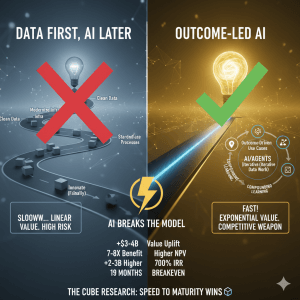I spoke with Ranjan Singh, Chief Product Officer at Kaseya, about the July 2024 global outage. We discussed the outage’s significant impact, which affected many individuals and businesses. Ranjan explained the cause of the outage and highlighted the challenges faced in recovery due to the large number of affected endpoints. The conversation emphasized the need for a quick and scalable resolution, detailing Kaseya’s involvement in the recovery and software solutions business.
Watch Kaseya To The Rescue With Ranjan Singh Here
Responding To The Outage
In the aftermath of the outage, Kaseya took measures to support its partners through various means. Initially, a communication bulletin was disseminated to inform partners about the availability of the company’s assistance, irrespective of their utilization of Kaseya’s solutions. Partners were encouraged to contact the support organization for necessary aid, with reassurance provided regarding the preparedness of the support team to address any issues, including the implementation of essential measures and provision of disaster recovery support.
Subsequently, as a provider of remote management and monitoring solutions, the company explored automating certain processes for remotely managed endpoints. Emphasis was placed on developing a script and solution to facilitate device booting, using USB sticks as needed, and conducting remediation, thereby augmenting operations efficiency.
Furthermore, avenues were explored for customers and partners using the company’s disaster recovery solutions to aid in recovery from specific situations. However, it was underscored that this assistance might not be universally applicable, particularly in cases necessitating physical presence to support a remote endpoint.
Ranjan’s Thoughts And Recommendations
As a provider of IT and security software, it is crucial for a company like Kaseya to rigorously implement measures to prevent the occurrence of defects and bugs in operational environments. While flawless software is an ideal rather than a certainty, the organization adheres to stringent quality assurance practices encompassing architecture, product development, and release procedures. This includes the utilization of targeted testing methodologies.
Also, in anticipation of potential disruptions, robust tools, support protocols, and internal processes have been established to effectively aid both the organization’s operations and those of its partners.
Furthermore, regular simulated BCDR (Business Continuity and Disaster Recovery) scenarios testing must be conducted to ascertain the ability to manage large-scale impact situations. It is very clear that the significance of backup and disaster recovery cannot be overstated, serving as the primary defense mechanism for customers and partners in the event of widespread impact incidents like outages and ransomware attacks.
Wrapping Up
Kaseya is well-positioned to assist end-users when they encounter trouble, either through its extensive network of managed service providers or directly. In terms of market relevance regarding disaster or cyber-recovery, Kaseya’s portfolio provides comprehensive coverage and meets most of the needs of its market segment. It is evident that there is a growing need for disaster recovery solutions considering the frequency of outages or cyber-events. This also presents an opportunity for MSPs and end-users to promote better practices such as recovery testing.
It’s important to note that Kaseya excels in integration, with up to 1,500 workflow integrations, which is a significant differentiator. This is perhaps its strongest differentiator, allowing the company to adeptly navigate complex recovery scenarios across various ecosystem players. I had the chance to witness the solution firsthand at a recent event, and it’s apparent that customer experience is a priority, with a focus on making the platform user-friendly, particularly for MSPs, to improve service efficiency and experience. AI-based features are already part of the equation and will continue to be so, to simplify and automate processes at scale in the future.
Overall, I expect the company to intensify its R&D technology investments going forward and further demonstrate its leadership in recoverability through education and awareness programs.


